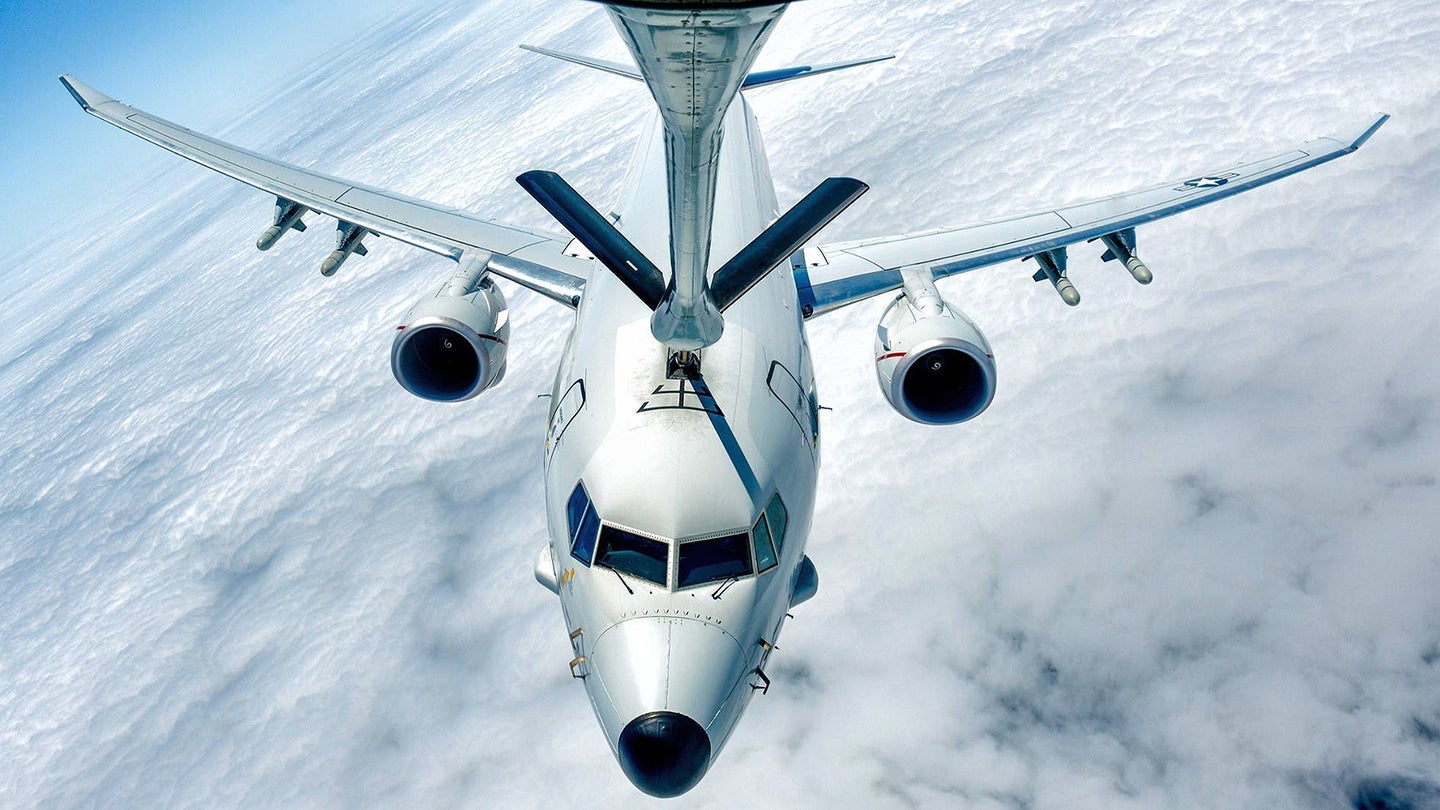A U.S. Navy P-8A Poseidon maritime patrol aircraft has been spotted flying a mission from Kadena Air Base on the Japanese island of Okinawa armed with live AGM-84 Harpoon anti-ship missiles. Reports suggest the aircraft may have been operating south of Taiwan, in what looks like a signal to an increasingly belligerent Chinese military in the region.
Photos of the armed P-8A, with the Bureau Number 169337 and wearing the markings of Patrol Squadron One (VP-1), operating from Kadena, appeared on social media yesterday, September 30th, 2020. Photographer RODN Kadena took the pictures of the plane apparently leaving the base on the same day.
Currently, the AGM-84D is one of the P-8A’s two core armament options, alongside the Mk 54 air-launched lightweight torpedo for anti-submarine warfare. The Harpoon gives the Poseidons the ability to challenge enemy naval movements, either in support of offensive operations or in order to defend friendly forces.
It’s unclear exactly where the Poseidon flew with its live-missile payload. On September 30, the SCS Probing Initiative did make a post on Twitter showing what it said was a P-8A, using the transponder code AE67C2, flying in the Bashi Channel south of Taiwan.
The SCS Probing Initiative operates out of China’s Peking University. It uses open-source data to monitor maritime and air activities in the South China Sea and other areas of the Pacific, with a particularly heavy focus on the movements of U.S. military aircraft.
Data from ADS-B Exchange also shows an unknown aircraft with this transponder code flying in that area on that day. It does not provide any information to confirm that this was a P-8A. There is no information in this database on the activities of the Poseidon with the Bureau Number 169337 since it made a flight to Kadena on September 2.

A Vietnam-based Chinese military-watcher who goes by @duandang on Twitter also noted that they had received information about a P-8A armed with Harpoon missiles that had flown to the South China Sea from Kadena on the same date. However, they said they were unable to confirm whether or not this occurred.
It would not necessarily be surprising for the P-8A and its live Harpoons to have flown to this region. Stretching from the southern end of Taiwan to the northern tip of the island of Luzon in the Philippines, the Bashi Channel is a strategically important link between the Philippine Sea and the hotly contested South China Sea, for both military and commercial ships.
This area has recently been the focus of increased activity by U.S. military aircraft, including the Navy’s P-8A and P-3C Orion maritime patrol aircraft. U.S. Air Force and Navy intelligence-gathering platforms have made regular trips there, as well.
This makes good sense, since, in recent months, the Bashi Channel also has hosted a number of high-profile naval exercises by the People’s Liberation Army Navy. This includes a major drill that included the participation by the PLAN’s latest aircraft carrier, the Shandong. All of this activity has also come amid steadily rising tensions between Beijing and authorities on the island of Taiwan, with the former regularly threatening to use military force if the latter attempts to declare full independence.
With that in mind, the appearance of the Harpoon-armed Poseidon in the area notably follows aerial patrol missions flown in August 2020 by the Republic of China Air Force’s F-16A Viper fighters similarly armed with live AGM-84s, as well. At the time, it was reported that these missions were launched amid fears of imminent Chinese military exercises designed to simulate the capture of Taiwanese-administered islands in the South China Sea. You can read more about those missions here.
Earlier in the year, U.S. Marine Corps F/A-18C/D Hornets also flew training missions carrying live Harpoons from Marine Corps Air Station (MCAS) Iwakuni on Japan’s home island of Honshu. This was also seen at the time as a demonstration to potential adversaries, such as China, of U.S. military sea control and area denial capabilities available in the region.

Of course, the U.S. Navy’s Poseidon is no stranger to the South China Sea, either, where earlier this year an example flew close to China’s Hainan Island, home to one the most important People’s Liberation Army Navy bases. On that occasion, the mission involved one of a number of specialized P-8As equipped with the secretive AN/APS-154 Advanced Airborne Sensor system. Standard Poseidons already have extensive intelligence, surveillance, and reconnaissance capabilities.
Regardless of where this Harpoon-armed P-8A flew in this recent sortie, it highlights another tool the U.S. military has for contesting or defending parts of the region against a maritime opponent. While the AGM-84D is the Poseidon’s primary anti-ship weapon at present, there are plans to increase its arsenal in the future, including the addition of the AGM-158C Long Range Anti-Ship Missile (LRASM), as addressed in this previous War Zone feature. The integration of LRASMs, as well as improved Harpoon variants, and other types of standoff munitions could mean the P-8 would be available to play a wider role in any future conflict in the region, for example using long-range weapons to strike targets on land, as well as at sea.

All told, whether carrying anti-ship missiles or just using its powerful sensors, P-8A patrols offer another means of challenging China’s access to vital areas of the Pacific, such as the Bashi Channel and the South China Sea.
Contact the authors: thomas@thedrive.com, joe@thedrive.com
